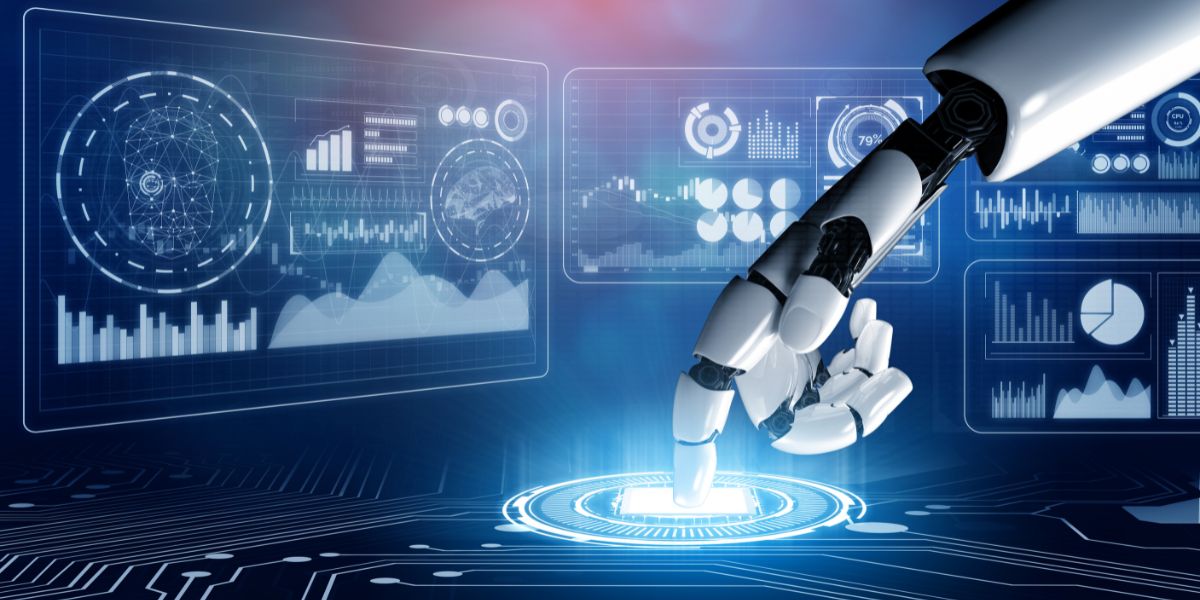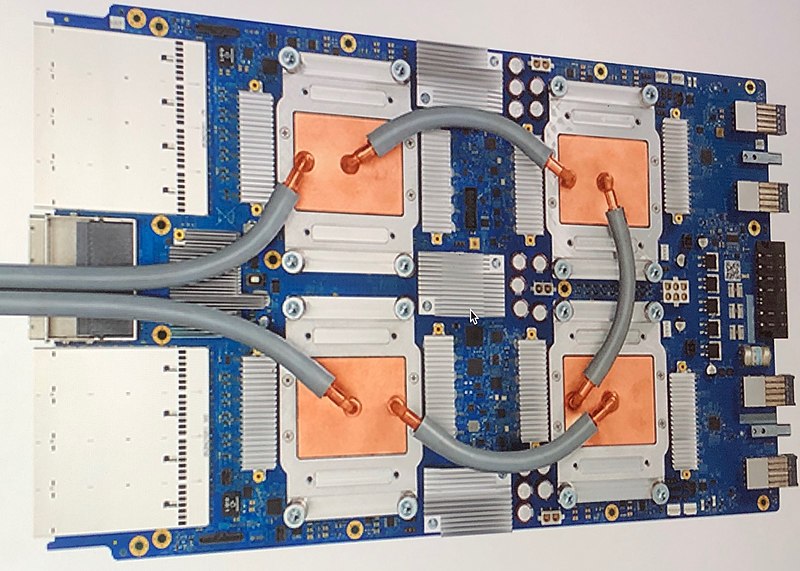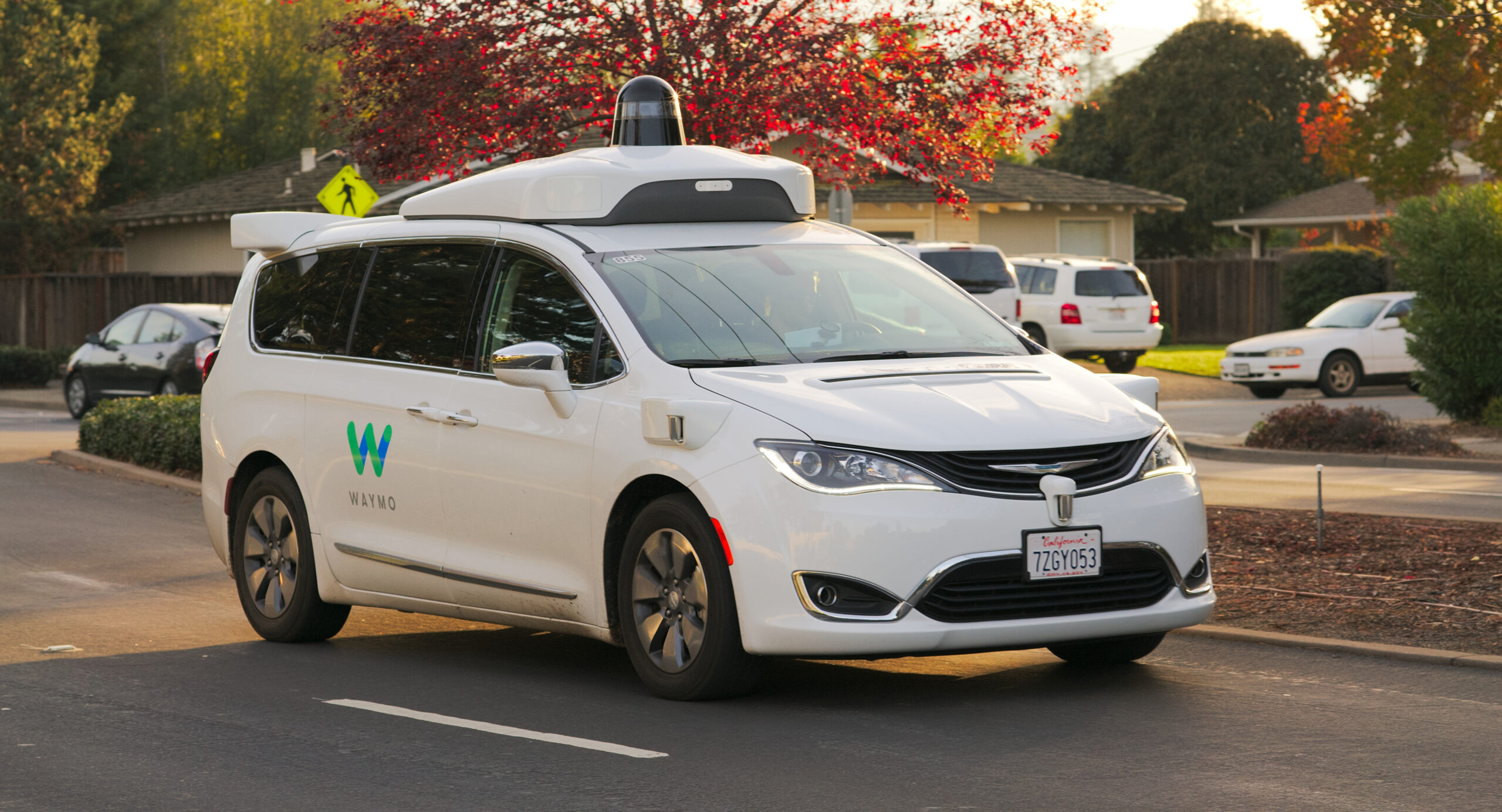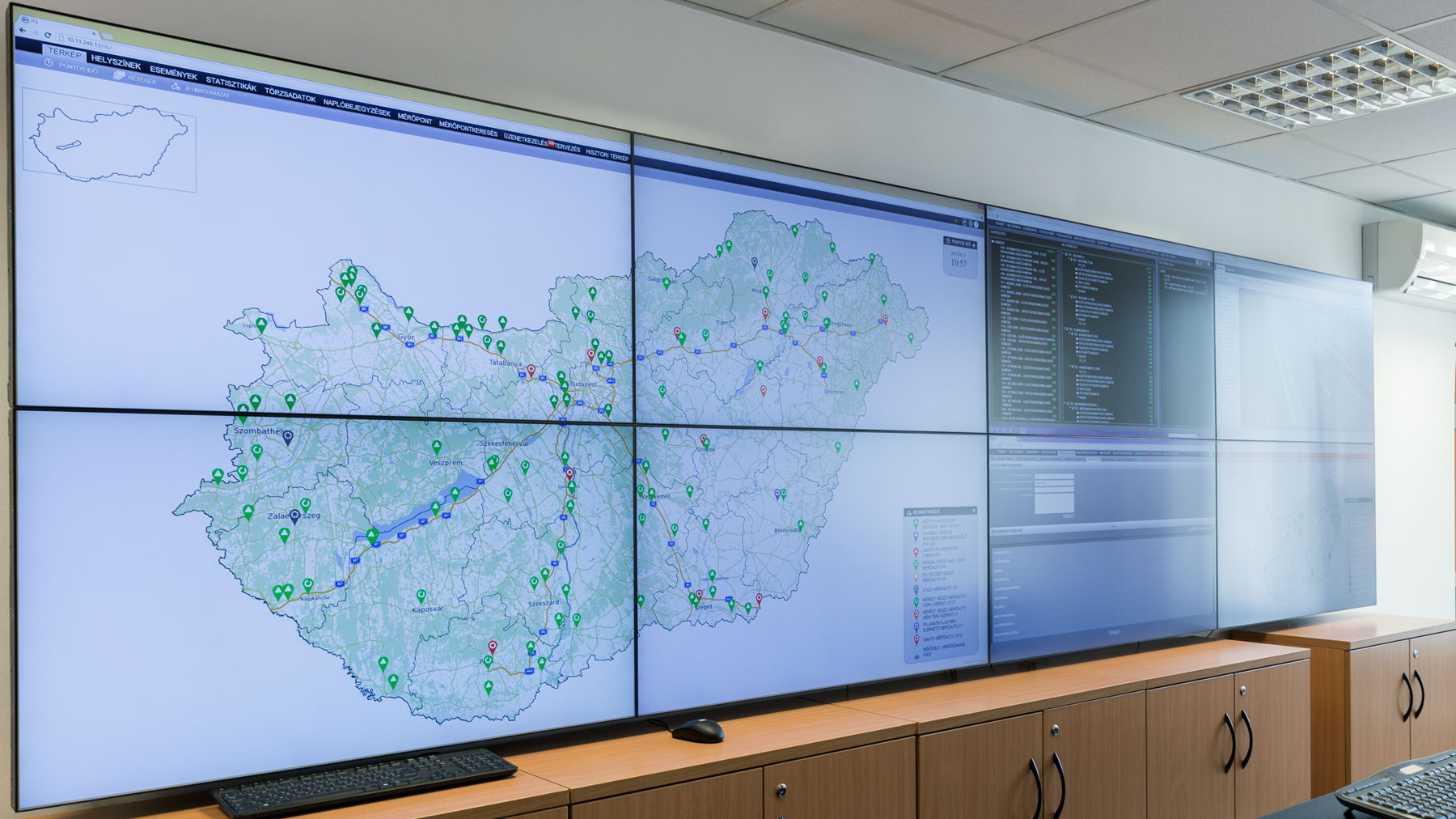Table of Contents
The Biggest AI Players
According to a research by Grand View Research[i], by 2025, the AI market is expected to grow to $390.0 billion at a 46.2 percent Compound Annual Growth Rate. CAGR is used for determining the annual growth rate of investments that can increase or decrease in value over a specified period of time (more than one year). (2019-2025). North America is the dominant player in the field, thanks to government funding, presence of tech leaders and a very strong technical base. Other factors that contribute to growth of AI include availability of cheap storage, parallel computing, high-speed internet, and big data espousal.
Most of the ‘AI players’ here refer to companies that deliver artificial intelligence and machine learning services through the cloud. These services enable other businesses, researchers, and developers to integrate AI into their systems and apps without having to set up and maintain their own infrastructure. These big players in the field of AI have the resources and power to shape our future and have heavily invested in AI.
AWS (Amazon Web Services)
Amazon is a market leader in cloud computing and offers AI products to business users, researchers, and individuals. Amazon even offers machine learning for free for users who want to build, deploy, and run their ML apps in the cloud, putting powerful technologies in the hands of anyone who can use them. This allows users to test their ideas before engaging in long-term commitments. Amazon provides AI, machine learning, deep learning, and other tools and offers different products including:
- Amazon Polly: text-to-speech services
- Amazon SageMaker: machine learning tools
- Amazon Lex: platform for building conversational interfaces using voice/text
- Amazon Rekognition: image and video recognition/analysis
- Amazon Comprehend: Natural Language Processing service (uses ML)
- Amazon Transcribe: ASR (Automatic Speech Recognition) using deep learning process
- Amazon Translate: Neural machine translation
IBM Cloud
IBM is one of the leading AI companies when it comes to business-oriented AI products. It offers a variety of industry-specific solutions, including IT operations, advertising, healthcare, financial operations, risk and compliance, video, security, and supply chain. The most popular IBM AI solutions include:
- Customer Service: Watson Assistant for Customer Service AI
- Business Automation: IBM Cloud Pak for automation of IP operations, integration, and network operations
- NLP: IBM Watson Discovery for Predictive analysis, trend detection and insights
- Explainable AI: explain and monitor models, visualize model insights, model tracking
Google Cloud Platform
Considered to be a leader in data analytics, Google is invested deeply in advancing AI and offers a variety of machine learning and AI services. The company also created its own Tensor AI chip and is behind TensorFlow, which is an open-source, end to end ML platform. Google offers end-to-end, fully managed cloud-based services for machine learning and data science. Its new unified AI platform combines the AI platform with AutoML (Automated Machine Learning) and MLOps (Machine Learning Operations).
AutoML refers to automating different tasks related to applying ML to certified or real-world issues. These tasks include development, deployment, integration and management. MLOps is an engineering discipline and a relatively new field. Its purpose is to standardize and streamline ML model development by unifying ML systems development with deployment. Its AI and ML products include:
- AI Platform and AI building blocks to build, deploy and administer ML models
- Cloud AutoML for training ML models
- AI Infrastructure for training ML and DL models
- Conversational AI includes speech-to-text, text-to-speech, virtual agents, agent assist, natural language, cross-platform conversational experiences and CCAI (Contact Center AI)
- AI for documents includes insights from natural language (unstructured text), language translation, OCR, unified API, invoice parser and form parser
- Media translation for real-time/pre-recorded audio-to-text translation
- Healthcare Natural Language for linking knowledge in text
- Recommendations AI for delivering customized product recommendations at a large scale
- Lending DocAI for automating mortgage document processing
- Procurement DocAI for turning unstructured documents such as receipts and invoices into structured and easily searchable information
Microsoft Azure
Microsoft offers Azure AI services for both businesses and consumers. The company also offers free signup for Azure for AI to data scientists, app developers, and machine learning engineers. It helps businesses develop mission-critical solutions such as speech comprehension, image analysis, and predictive analysis. It empowers them with advanced ML capabilities to build, train, and deploy models easily and quickly.
Users can use an open-source AI framework of their choice, including TensorFlow, PyTorch, and scikit-learn and accelerate deployments using Azure Databricks, ONNX Runtime, and Azure Machine Learning. Azure Cognitive Search enables businesses to uncover insights, relationships, and patterns in content, including documents and media, while AI agents and apps include Bot and Cognitive Services.
Alibaba Cloud
Alibaba is Asia’s leading cloud provider and offers a ML platform that includes an easy-to-use visual interface, which allows users to assemble AI functionally by simply dragging and dropping components. Users can take advantage of the built-in algorithm components that accelerate the development process.
The end-to-end Machine Learning platform is available for various AI services, including model training, data processing, feature engineering, model evaluation, and model prediction. The platform is suitable for different purposes, including data processing, data analysis, data mining, natural language processing, and architecture. Users can opt for different components on a pay-as-you-go basis and ‘rent’ GPU and CPU resources as per their requirements.
NVIDIA
NVIDIA RTX GPUs natively support AI, but researchers and businesses have been using NVIDIA GPUs long before the launch of RTX GPUs. AI researchers and developers see massive value in the parallel processing design and CUDA cores in NVIDIA GPUs. NVIDIA is making notable advances in the domain of autonomous cars and we can soon expect to see cars that are powered by NVIDIA chips and AI.
Today’s deep learning projects rely heavily on GPU acceleration, which is what NVIDIA delivers to desktops, laptops, data centers and super computers. NVIDIA GPU deep learning is compatible with a variety of cloud-based services, including Amazon, IBM, Google, and Microsoft. In addition to GPUs, NVIDIA also offers embedded AI/deep learning devices such as NVIDIA JETSON, which is a low-energy, high-performance solution for embedded apps. The product catalog includes both hardware and software solutions including:
Hardware
- DGX Systems
- EGX Platform
- Data Center GPUs
- Virtual GPU
- NVIDIA Drive
- NVIDIA Isaac
- Jetson
- GeForce RTX
Software
- CUDA-X AI
- NGC Catalog
- Data Analysis
- Deep Learning SDKs
- Deep Learning Frameworks
- Conversational AI
- Recommender Systems
- Industry Frameworks
Intel
Intel has a legacy of being the top computer chip producer for decades and has hardware as well as software AI initiatives. Its deep learning processor Nervana is custom built for visual recognition and neural networks, while the company is also making advances in deep learning and NLP for hardware and software.
New Intel Xeon processors and intel-optimized AI software allow businesses to seamlessly build/deploy their AI apps. Domain-specific accelerators and oneAPI standard provides flexible AI acceleration and quicker deployment.
Qualcomm
Qualcomm in the mobile industry is what Intel is in the desktop and server computer industry. It promises to transform industries and accelerate commercialization of AI through its new generation chips. The 6th Gen Qualcomm AI Engine brings AI to everything including gaming, photography, and connectivity. Its AI-accelerator architecture boosts the performance of Qualcomm AI Engine up to 26 TOPS (Theoretical Operations Per Second. TOPS is used to gauge computing power of a chip. Last gen Snapdragon 865, which was one of the fastest chips in the industry, topped at 15 TOPS and the latest Snapdragon 888 chip takes it to another level at 26 TOPS.
The Tensor Accelerator packs twice the compute capacity compared to previous generation solutions, while the Scalar Accelerator improves performance by 50 percent. These improvements translate into 3X improvement in terms of performance per watt. The new Qualcomm chips have a contextually aware Sensing Hub for on-demand AI and a dedicated AI processor. Qualcomm’s other tools and features include:
- Neural Processing SDK
- Snapdragon Developer Tools (SoCs)
- Hexagon DSP SDK
- AI Model Efficiency Toolkit
OpenAI
OpenAI is a nonprofit organization and research group devoted to AI research and development for the benefit of humankind. It is being sponsored by industry leaders including Microsoft. The main objective of the organization is to ensure that AGI (Artificial General Intelligence) is used for the benefit of all of humanity and not just a few markets.
OpenAI API can be applied to almost any language task, including sentiment analysis, semantic search, content generation, summarization, and translation via HTTPS calls. Users can start for free and choose from different per-model pricing options.
H2O
H2O.ai is another provider of open source AI and machine learning tools. H2O AI Hybrid Cloud is an end-to-end platform with thousands of use cases, including financial services, healthcare, insurance, marketing, telecom, retail and manufacturing. The company is working in partnership with some of the most prominent names in the technology sector, including NVIDIA, IBM, HP Enterprise, Intel, Amazon, Microsoft, and Google Cloud. The key functionality includes:
- Fraud detection
- Customer churn prediction
- Credit risk scoring
- Fraud mitigation
- Customer retention
- Personalized product bundling
- Clinical workflows
- Medical testing
- Lead scoring
- Content personalization
- Segmentation
- Predictive customer support
- Predictive fleet maintenance
- Supply chain optimization
- Predictive maintenance
- Transportation optimization
- Pricing optimization
- Product recommendations
- Assortment optimization
How AI is Making Our Daily Lives Better?
AI is all around us, whether we realize its existence or not. From a simple Google search to Facebook newsfeed and self-driving cars, AI is constantly at work in the background. Sometimes it’s obvious, while sometimes we don’t even realize AI is behind so many things. The following examples show the breadth of AI across different industries and how it is making this world a better place to live.
Digital Assistants
Almost every tech giant has its own digital assistant whether it be Google, Apple, Microsoft, Amazon, or Samsung. Emotech introduced a voice-controlled AI assistant named Olly who had an evolving personality. Olly uses advanced machine learning algorithms to learn and become like its owner.
It can understand the facial expressions, verbal patterns, voice inflections and make suggestions based on these. Olly went far beyond what most voice assistants can do today and can even suggest playing user’s favorite music if it detects that he/she is resting his/her head.
Other popular and widely used digital assistants include Apple’s Siri, Amazon’s Alexa, Microsoft’s Cortana, and Tesla. The voice-to-text feature is available on almost all modern smartphones and it has become a routine for users to communicate with their devices using their voice. Smart or digital assistants will play a pivotal role in bridging the gap between us and ‘smart’ home devices in the future.
Self-driving Cars and Aeroplanes
Self-driving cars are not science fiction anymore as we steadily inch towards driverless cars on the roads. According to PolicyAdvice[ii], 33 million autonomous vehicles are forecasted on the roads by 2040, thanks to recent breakthroughs in the field of AI and increased computing power. These self-driving cars are loaded with advanced sensors and powered by AI technologies, which capture thousands of data points such as speed, traffic, road conditions, etc. every millisecond.
AI and machine learning help interpret such large amounts of data using state-of-the-art computing devices. Some notable self-driving car projects include Google’s Waymo, Cruise, and Luminar Technologies.
Although not in its current form, the use of AI as an autopilot in commercial flights dates back to 1914. According to an article published in the New York Times[iii], on average a human only steers for seven minutes when flying a Boeing plane, which is usually limited to takeoff and landing. This clearly shows how much AI is already taking care of so many things behind the scenes.
Spam Filtering and Email Categorization
Most of us think of AI as robots taking over our planet, but it’s actually small things like email and spam filtering where it is making a difference right now. Today’s spam filters are mostly powered by AI. Filtering emails just by keywords such as ‘Nigerian Prince’ or by email addresses does not work anymore. Something much more advanced is needed to deal with ever more-creative spammers, who keep updating their tactics around the systems currently in place.
AI takes into account all the important factors and learns from different pointers, including metadata, message body, title, and senders and recipients. Results can be further personalized based on the user definition of what’s spam and what’s not. That’s why it should not come as a surprise that Google is successfully able to filter 99.9 percent of spam for its Gmail users.
A similar approach is used for categorizing emails. A good example is Gmail’s ability to categorize and label emails automatically into different inboxes. There can be a huge variation between how users define email as important. That’s why manual intervention is often needed to fine tune categorization.
Machine learning programs learn through user behavior and the type of emails they mark as important. Inboxes that can ‘properly’ reply to emails on their own are the future. Google has already introduced the Smart Reply feature (Gmail and Allo) that allows the user to send quick replies based on the content of an email.
Healthcare
Healthcare is another key area where AI is having a profound impact and can potentially be a huge game changer. From diagnosis to robot-assisted surgeries, AI is improving almost every aspect of healthcare, which is also helping industry deal with existing inefficient processes and high costs.
Massachusetts General Hospital in collaboration with NVIDIA has implemented machines powered by AI to detect, diagnose, treat, and aid in the management process. The machines are being fed with over 10 billion medical images (pathology and radiology) to facilitate faster diagnostic capabilities. The hospital recently finished setting up a pilot system that was able to prescreen patients in a lot less time.
Finance
Accuracy and ability to process large amounts of data is pivotal in the finance industry, which helps the management make more informed decisions. This makes finance-AI a perfect match as AI can efficiently and accurately sift through large piles of information. AlphaSense is an AI-powered search engine that gives investment firms a competitive advantage using NLP and linguistic search. It can analyze important data points across 35 thousand financial institutions and can scan millions of data points.
Numerai is another example of an AI-powered solution, which is a crowdsourced hedge fund that uses crowdsourced machine learning. Other applications include mobile check deposits using an app, to help with fraud prevention and credit decisions. We can expect AI-powered financial systems to soon start giving good financial advice.
Travel/Transportation
From finding the most efficient route to travel arrangements, AI is changing the travel industry and making things easier and more efficient. With over 70 percent of people making bookings using their smartphones, almost one in three use a virtual travel assistant to get things done and plan trips for them. Similarly, chatbots powered by AI and machine learning facilitate communication and quick response. Some of the most prominent examples in this category include Google Maps, Hopper, and Hipmunk.
Boxever was created to delight customers by micro-moments, which refers to reflexively turning on a mobile device to learn, watch, do or buy something. It is helping helps businesses find new ways to boost engagement with customers throughout their journey.
Similarly, John Paul uses predictive algorithms to improve client interactions by understanding their needs and wants on an acute level.
Social Media
Social Media platforms such as Facebook, Twitter, Instagram, and Snapchat have access to massive amounts of data. These platforms are in a never-ending battle to organize and classify this data to better personalize their users’ experiences. The industry is also under a lot of pressure because of things like hate speech and fake news, which makes AI and machine learning highly valuable.
Facebook uses AI to recognize friends in photos and ‘DeepText’ to understand text with high accuracy, in multiple languages and at a speed of thousands of posts per second. Similarly, Pinterest uses computer vision, while Instagram uses ML to understand contextual meaning. In addition to the advancements in AI and machine learning, social media platforms have also incorporated QR codes into their features to enhance user experiences and facilitate interactions.
QR codes offer a convenient way for users to connect with others, share information, and discover new content within social media platforms. Platforms like Snapchat and Instagram have integrated QR codes as a way to connect with friends and followers.
Robo-readers and Plagiarism Checkers
Compared to old plagiarism tools that relied on massive amounts of data and a database of reference materials, modern plagiarism checkers like Turnitin use machine learning to detect text that’s not in the database. There might be sources that have not been digitized or in a foreign language, which old-school tools cannot consider. This is where machine learning comes into action and can check for plagiarism with very high accuracy using optimal similarity functions, which gives a numeric estimate of similarity between two sources.
Grading essays and other academic content is a labor intensive and time-consuming task. The adoption of grading algorithms varies widely among institutions, but they are becoming more popular. In GRE exams, the essays are graded by a human as well as an e-Rater, which is another name for a robo-reader.
A second human is involved if there is a lot of difference between the grading of the two. This hybrid approach helps accomplish more and costs less, while future improvements might even lead to putting our trust fully in robo-readers.
E-Commerce
AI and machine learning enable businesses to build personalized relationships and user experiences. For example, Amazon gives recommendations based on previous user interactions, but advanced AI algorithms go a step further and predict what the user might want to buy next. Twiggle is another example of an advanced AI-powered search engine that uses natural language to find relevant products.
The search and recommendation engines working behind the scenes automatically combine various relevance factors and output the most relevant products. AI is also being used to prevent credit card purchase frauds and minimize chances of falsely declining a card, which is expensive for both the credit card companies and the users.
Marketing
AI is becoming part of marketing campaigns, including campaigns of small and medium businesses. Technology in general and cloud computing in particular has leveled the playing field for businesses of all sizes. AI is helping marketers build detailed customer profiles and target them based on accurate and up-to-date information.
For example, Amplero’s marketing tools detect patterns for building dynamic customer profiles at scale, which marketers can use to effectively target their customers, upsell, and retain loyal customers.
Robotics
Today’s robots are far from what we have come to expect after watching sci-fi movies, but they are able to solve problems and ‘think’ to some extent. The Roomba 980 is one such robot, which is a vacuum cleaner that uses AI to identify obstacles and take the most efficient routes to clean a room. Sophia, the humanoid by Hanson Robotics is a socially-learning robot that can talk and use facial expressions.
Customer Services
Platforms such as Cogito improve customer services’ emotional intelligence and fuses behavioral sciences with machine learning. The result is a platform that can apply modern technologies to millions of calls each day.
Media
Netflix analyses billions of customer reactions and uses predictive technology to suggest content its users are most likely to watch. With the growth of the dataset, the recommendation engine gets smarter. Pandora provides recommendations based on 400 different musical characteristics and can recommend songs that otherwise might go unnoticed.
AI and Entrepreneurship
For the first time in human history, AI researchers are getting closer to undertaking human capabilities in software at scale. AI opens up new possibilities and can be applied to almost any sector.
With the advancements in technology and computing power, AI provides new opportunities for entrepreneurs to innovate, especially in sectors that involve a lot of data processing and synthesis. AI helps them identify new opportunities using big data, multivariate analysis, and NLP. The key areas where entrepreneurs can leverage AI include [iv]:
Marketing: AI can sift through large amounts of data and find trends and patterns, which otherwise might not be visible.
Task-driven apps: AI can help free up time of workers and resources and complement the existing workforce, ultimately boosting productivity.
Emotion gauging and sentiment analysis: Entrepreneurs can use image recognition, surveys and social media to perform sentiment analysis, which can help generalize human perspectives reliably and predict customer behavior.
Process efficiency: AI enables businesses and entrepreneurs to leverage machine learning to improve their daily operations by using resources more efficiently.
Military Applications
Initially, AI was funded by the military and government organizations, so it’s no surprise that they were the primary users. Although AI is considered to be the future of warfare, it will not be in the way most people think. According to a report by MarketsandMarkets [v], by 2025, spending on military applications of AI is expected to reach almost $19 billion. The main military applications of AI include:
Cybersecurity
Cyber-attacks can lead to system damage or loss of military information. Use of AI can help protect systems, networks, and applications from unauthorized access. AI-enabled systems can also record cyber-attack patterns and help develop effective counter strategies.
Warfare
Countries including the US and China are embedding AI into their warfare systems and weapons, including airborne, naval, land, and space. These systems rely less on human input, enhance performance, require less maintenance, and allow collaborative, high speed attacks.
Transportation and Logistics
Effective and efficient logistics and transportation is an essential part of successful military ops, which includes transportation of troops and ammunition, goods, and armaments. Integration of AI with military operations not only increases efficiency, it also reduces operational efforts and transportation costs.
Another main advantage of using AI is timely detection and prediction of component failures and anomalies. For example, the US military is using IBM’s Watson AI platform to proactively identify maintenance issues in the Stryker vehicles (Infantry Carrier Vehicles, ICVs).
Battlefield Healthcare
Integration with RSS (Robotic Surgical Systems) and RGPs (Robotic Ground Platforms) provide remote surgical and evacuation support. AI-enabled systems can quickly sift through medical records of soldiers in difficult conditions and aid in complex diagnosis.
The US Veterans Administration in collaboration with IBM has developed a prototype EMRA (Electronic Medical Record Analyzer), which is a clinical reasoning system designed to leverage machine learning for processing e-records of patients and identifying and ranking critical health issues automatically.
Target Recognition
Accuracy is essential in complex combat situations in addition to improving target recognitions system’s ability to recognize hostiles from non-hostiles, AI-enabled systems can analyze news feeds, documents, reports, and other types of unstructured data and provide in-depth understanding of key areas. These key areas include environmental conditions, weather, enemy behavior, flagging supply lines, identifying vulnerabilities and bottlenecks, and assessing mission approaches.
Data Processing
AI is especially useful when it comes to processing massive datasets to extract valuable information from different datasets and multiple sources. This helps the military to derive correlations and recognize patterns that otherwise might not be visible to humans.
Situational Awareness
Situational awareness and threat monitoring systems rely on large amounts of data, reconnaissance, and surveillance. Integration of these systems with AI helps in effective threat monitoring. For example, AI-enabled UAVs/drones help identify threats and strengthen the security of bases.
Government Applications
AI offerings to government organizations can be broadly classified into three main categories: improved services, savings, and data-driven decision making. A report by Accenture[vi] shows that 92 percent federal executives believe that government organizations need to think of customers as partners and should use digital services to enhance relationships and their view of the government. Some use cases for the government include:
Healthcare: tracking spread of diseases, cross-checking patients who have similar symptoms, graph analysis, triaging patients
Education: personalized education, marking exams and papers
Domestic security: crime prediction, optimal police presence and predictive policing by using AI to identify patterns and generate heat maps
Mass surveillance: analysis of data obtained from CCTV cameras using machine learning and deep learning techniques
Public relations: CS chatbots, scheduling meetings, automatic form filling, recruitment, analyzing citizen feedback on different platforms including social media
Social Welfare: identification of fraudulent social benefit claims, which can save governments billions each year. AI can help identify patterns and analyze social media profiles to check for conflicting information.
Emergency: using machine learning and voice recognition to classify emergency calls based on the level of their urgency, predicting wildfires
Transportation: self-driving shuttles, social media monitoring to identify traffic incidents
Document automation and translation: invoicing, legal documents, certifications, and real-time translation
Conclusion
Although you might have heard about self-driving cars getting into accidents, experts predict there will be up to 90 percent fewer accidents (compared to ‘normal’ cars) when the technology becomes mature in the near future. Similarly, AI-powered ridesharing apps are expected to reduce on-road cars by up to 75 percent. These are big and promising numbers, but we are not yet sure when this is going to happen. Some believe that it’s just a matter of a few years, while others think it might take decades to materialize.
It might be difficult to clearly see how AI will affect our daily lives in the future, but there is already enough evidence that suggests it is going to have a profound impact. The examples covered here are like scratching the surface and there is a lot more going on behind the scenes.
Specific industries are having interaction with AI far beyond what’s covered here and we cannot say with certainty about their future implications. But one thing is for sure that AI will power an industrial revolution and become deeply integrated in our daily lives.
[i] “Artificial Intelligence Market Size Analysis Report, 2021-2028”. Retrieved from https://www.grandviewresearch.com/industry-analysis/artificial-intelligence-ai-market
[ii] “25 Astonishing Self-Driving Car Statistics for 2021” (29 April 2021). Retrieved from https://policyadvice.net/insurance/insights/self-driving-car-statistics
[iii] “Planes Without Pilots”. Retrieved from https://www.nytimes.com/2015/04/07/science/planes-without-pilots.html
[iv] “Why is AI important?”. Retrieved from https://www.stateofai2019.com/chapter-2-why-is-ai-important/
[v] “Artificial Intelligence in Military Market by Offering”. Retrieved from https://www.marketsandmarkets.com/Market-Reports/artificial-intelligence-military-market-41793495.html
[vi] “Accenture Federal Technology Vision 2020: FIVE TRENDS DEFINING POST-DIGITAL GOVERNMENT”. Retrieved from https://www.accenture.com/_acnmedia/Thought-Leadership-Assets/PDF-3/Accenture-AFS-Five-Trends-Defining-Post-Digital-Government.pdf









